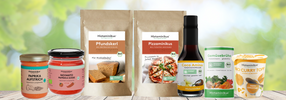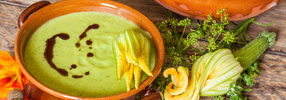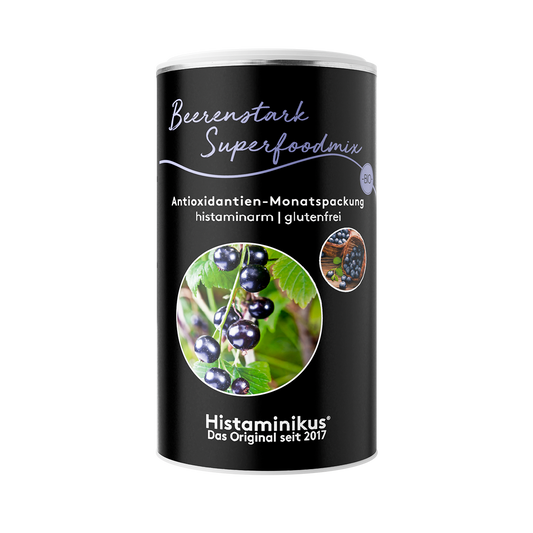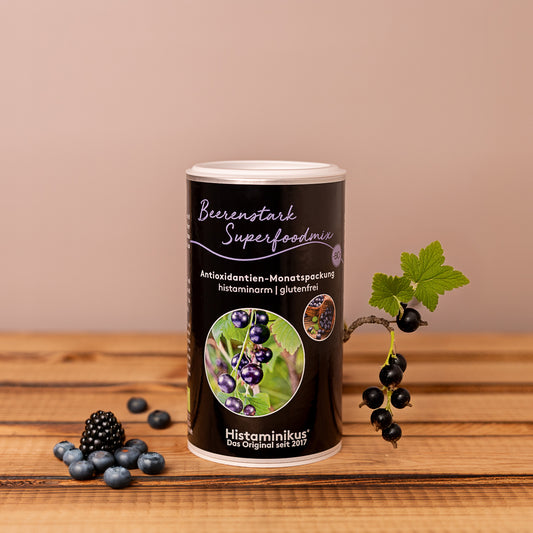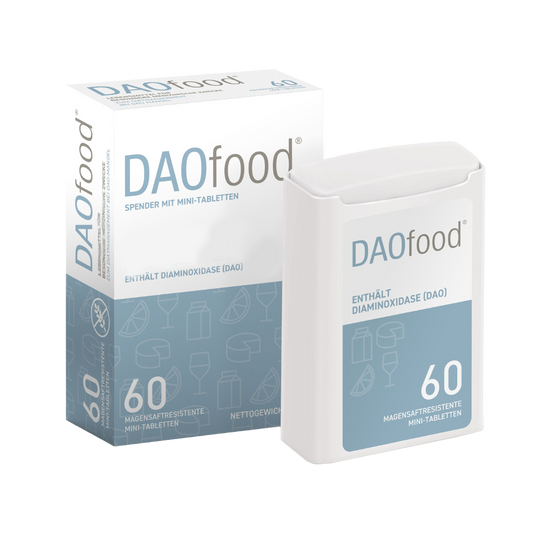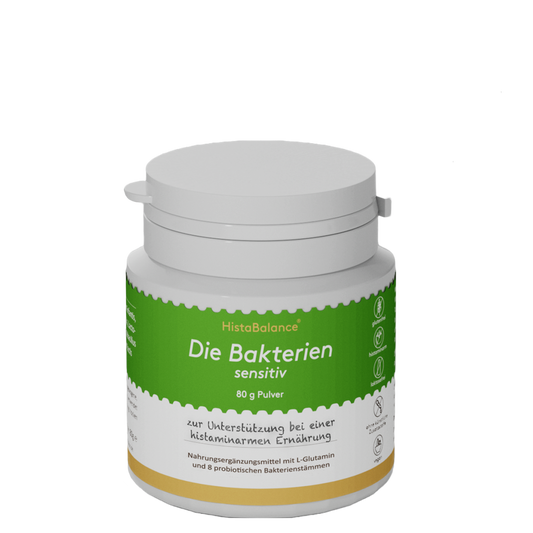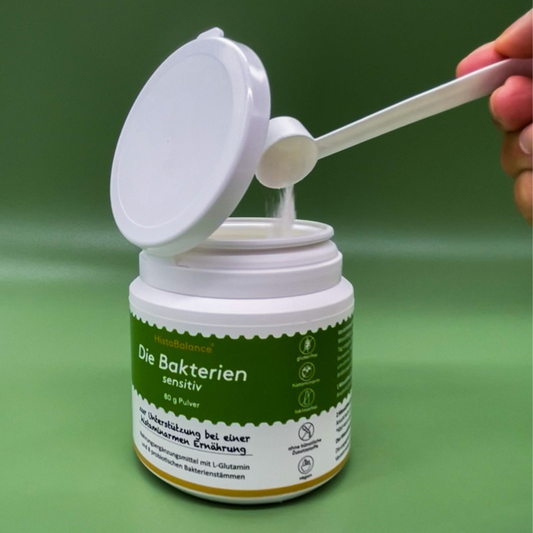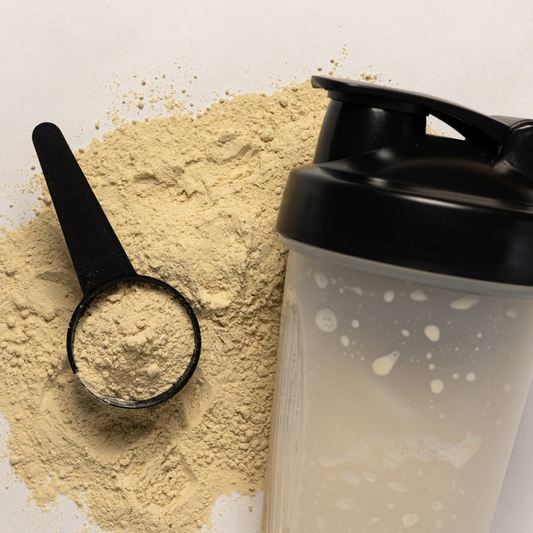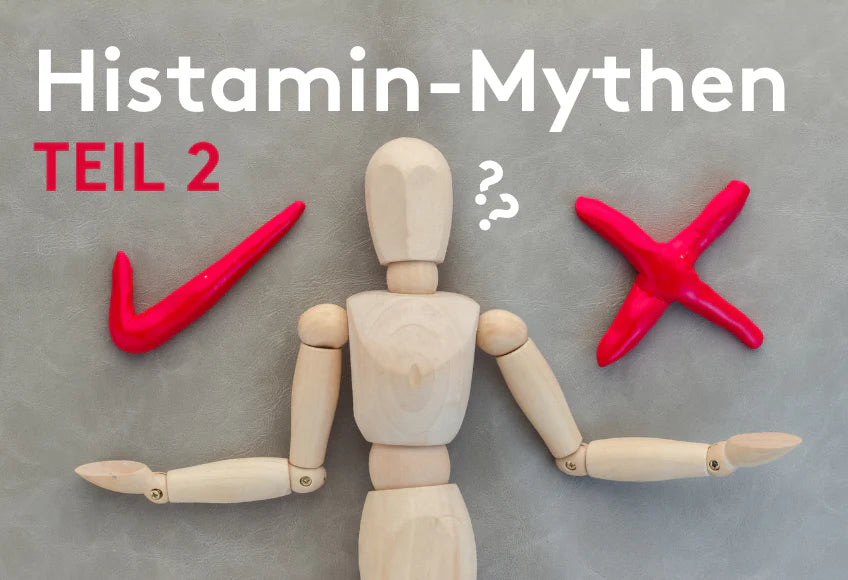
Widespread histamine myths - second part
Have you already fell for it?
You wished that we reveal more histamine myths. That is why we continue with part two of our histamine myths today. You don't know our first row yet? Then read the first quickly now 10 histamine myths.
Certainly have you already fell for some histamine myths? Unfortunately, there are still many false information on the subject of histamine intolerance on the Internet. Yes, even doctors or therapists pass on false information. In our series we clarify the most famous histamine myths. Let's go.
Myth 11:
Waited dishes are incompatible with
This flat rate is not correct. Nevertheless, there is a lot to consider when warming up food. A rule of thumb is that you Do not warm up protein -containing dishes should, because protein can quickly form a lot of histamine. All other Food that contains carbohydrates or neutral foods can be warmed up the next day without any problems. With these (not protein -containing) foods, you can also cook great and have a meal for the next lunch break or on days when things are hectic.
Myth 12:
Dine food when cooling or thawing histamine
Have you cooked or left left and don't know how to process them Histaminkonform? Not an issue, because with this myth it depends on the right timing. So if you have cooked or left food, then Cool down the food quickly, either in a cold water bath or put it directly in the fridge. After that, you can freeze the food, for example, or keep it in the fridge for the next day.
Avoid frozen food slowly and for hours at room temperature or in the refrigerator. Because the thawing process should definitely go ahead quickly. Here are our refugee tips: Put frozen food either frozen in the pot or the pan or put it in a hot (not boiling!) Water bath in the freezer bag for 20-30 minutes. Make sure that there is no water in the bag. Incidentally, you can also use raw frozen meat. It is best to slowly roast minced meat when frozen. A little tip: Do not add the raw minced meat (and other raw meat) as meat lumps into your freezer bag, but spread it out flat in it. The advantage is that it can be frozen so deeply frozen or is thawed in the hot water bath in no time.
Myth 13:
Eggs are histamine containing
According to various information on the Internet, the chicken egg yail is compatible with histamine intolerance. The chicken white, on the other hand, is called histamine liberator. The protein is said to release histamine from the mast cell. But this is not entirely correct. We even have our own this myth Blog post Dedicated and examined the associated study there more precisely. Here again the study was summarized:
It was found that eggs have no more liberator capabilities when cooked. With raw eggs, different reactions of the mast cells occurred depending on the animal species. The conclusion of this study is that eggs can be compatible in a cooked or cooked form in the case of histamine intolerance.
Myth 14:
Vinegar is not tolerated
This blanket statement is also not true. If we look at the Sighi list, we will find that it is quite compatible vinegar with histamine intolerance gives.
• Belong to the tolerable vintages: Verjus (grape vinegar), table vinegar, alcoholic, brandy, brandy vinegar, vinegar essence.
• Carefully test Can you apple cider vinegar.
• On the other hand, incompatible and therefore strongly histamine are: Red wine vinegar, white wine vinegar, balsamic vinegar, balsamic vinegar
Vinegar should always be consumed in small quantities because it is a strong acidity. But usually it only takes a little of it to give food or lettuce sauces a slight acidity. As an alternative to vinegar, you can also use ascorbic acid. Here you hit two birds with one stone: you give your food a light acidity and still lead yourself to vitamin C.
Myth 15:
Cinnamon is not compatible
This blanket statement is also wrong. Because at cinnamon we have to distinguish between Cassia cinnamon and Ceylon cinnamon. Ceylon cinnamon is the high-quality and fine cinnamon type. It is brighter and mild in taste and contains significantly less cumarine than Cassia cinnamon. Cassia cinnamon is the cheaper and qualitatively inferior cinnamon, which is darker and sharp in taste. It contains high amounts of the secondary plant substance Cumarin. Cumarin can - if large quantities are consumed - lead to diarrhea and rapid heartbeat.
With histamine intolerance, you should therefore use organic ceylon cinnamon, since it contains hardly any coumarin and is not sharp like the Cassia cinnamon. If you are unsure, start best with small quantities. Ceylon cinnamon has an anti-inflammatory effect, which is very conducive to histamine intolerance. So it would be very good if you integrate it into your menu. If you still react to cinnamon, then salicylate intolerance or cross allergies can be reasons for this. It is best to test that with one Allergist out of.
Have you ever met one of these histamine myths in the past? Unfortunately, many of these statements regarding histamine intolerance are still spread too often. Therefore, we are all the more pleased that we can bring some light into the dark with this blog post.
Dietary supplements
-
Beering superfoodmix organic
5.0 / 5.0
(4) 4 total reviews
Regular price €28,99 EURRegular priceUnit price 170,53€ / per kg -
The bacteria sensitive
4.65 / 5.0
(139) 139 total reviews
Regular price €32,90 EURRegular priceUnit price 411,25€ / per kg -
Protein source organic
4.6 / 5.0
(58) 58 total reviews
Regular price €24,99 EURRegular priceUnit price 55,53€ / per kg

From those affected for those affected
We are Thomas and Michaela Zinser, founder of Histaminikus.
Because of the own histamine intolerance of Michaela and our son, we founded Histaminikus. The frustration does not find any suitable histamine food has spurred us to develop low -histamine food.
We would like to give you back a piece of quality of life. Feel free to look around with us.
Kind regards
Thomas and Michaela

